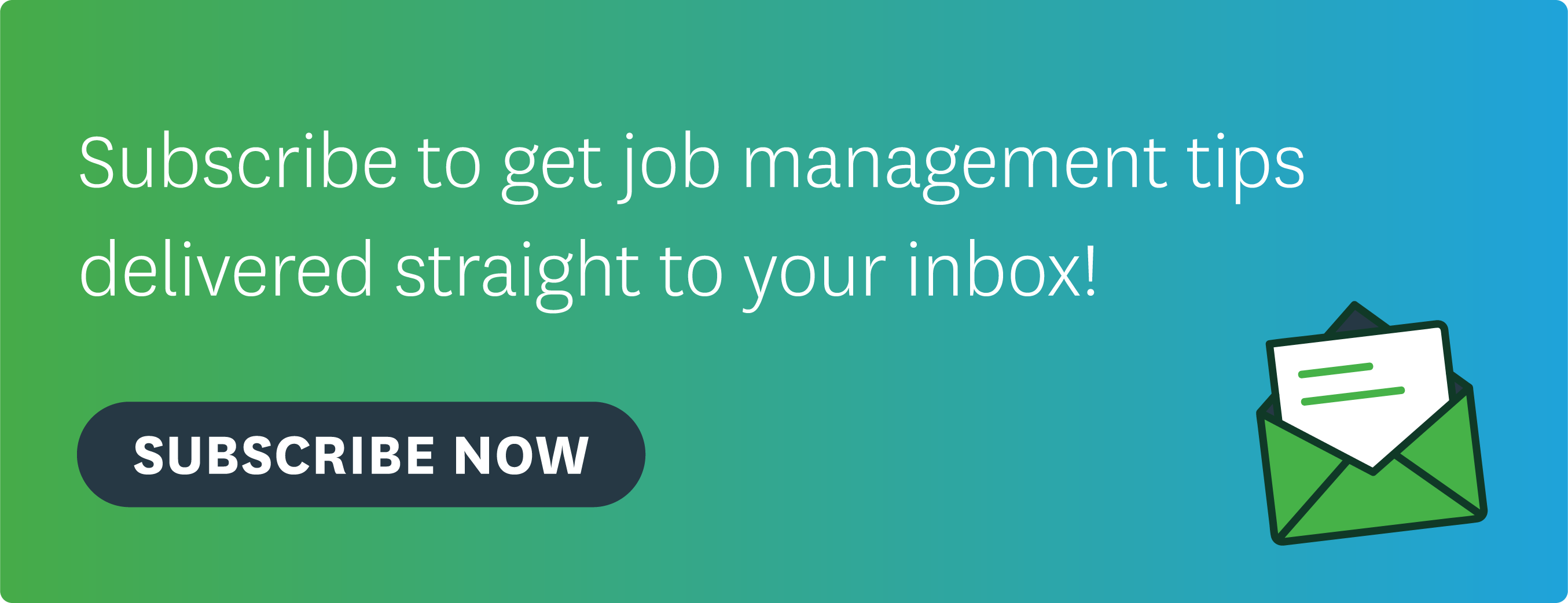A business proposal is often your first impression to prospective clients.
More than just a summary of costs and timelines, business proposals describe the work you’ll do, your company approach and why the client should choose you over your competitors.
By providing this information clearly and professionally, you’ll be able to minimise potential misunderstandings, build stronger client relationships and win more business.
In this blog post, we explain when you should use proposals for new client engagements and outline key information that service businesses typically include in the proposal document.
When to use a business proposal for a client engagement
Business proposals are sales documents that are used to win a prospect’s new business. They usually contain all of the information from a cost estimate, quote or bid, but proposals also include details that help communicate the “full package” of your service business offering – such as company story, team background, your approach and values, and client testimonials.
Proposals can be solicited (in response to a request from a prospective client) or unsolicited (the client doesn’t specifically request a proposal). Your company may receive a Request for Proposal (RFP) from a prospective client, which is a formal document that outlines project specifics (such as budget, scope and timelines) for the purpose of soliciting proposals from competing vendors.
Proposals are usually created after an initial consultation or conversation with the client to understand nuanced details of how the project will be carried out. Given that proposals can require more time and resources to put together, service businesses often charge clients a fee for the consultation and proposal process.
For small businesses with straightforward projects (such as a routine roofing job or residential landscaping work), estimates often serve the same purposes as proposals: they outline work to be done, estimated costs and deadlines. Proposals, however, are standard for service businesses involved in large-scale, complex projects (such as a townhouse development or commercial build) when the client requires more information to assess whether a business will provide the right solution to their needs.
What you should include in a service business proposal
There isn’t a one-size-fits-all approach for how to write the perfect proposal. What you choose to include and how you present information will depend on your industry and your unique business processes.
For example, architecture firms usually need to include a visual element such as a model or drawings. Creative agencies often use presentation and design concepts to pitch and win new business from prospective clients. In these situations, a proposal may be more of a supporting summary document that is provided to the client after a sales presentation.
We’ve outlined some general information that service businesses should consider including in their business proposals below. You can include some or all of this information depending on whether you’ve worked with the client before and the size and specifications of the project.
Title page & table of contents
The proposal is likely to be the first official document you share with your potential client, and it’s your first chance to make an impression. Make sure your title page reflects your company’s branding to increase recognition and reinforce your brand identity. Include the name of the project, your name, company name, the date you submitted the proposal and the client’s details.
Follow the title page with a table of contents to clearly outline the information contained in your proposal and help readers easily navigate to important sections. If you’re sending a digital proposal, add hyperlinks to each section header to help your clients jump to specific pages. (The easier your proposal is to digest, the more likely it is to get considered and accepted!)
Executive summary
An executive summary tells readers what they can expect to learn from your proposal. It should grab the reader’s attention and offer a summary of the proposal’s key points. By reading the executive summary, the client should have a good understanding of the services your company will provide and how you’ll solve their business needs.
“About us” or team introduction
Describe what you do and why you’re passionate about it – this could be the same description you’ve got on your website. Consider introducing the key team members that will be working on the project, including a short bio for each.
Problem definition
Explicitly defining the client’s problem shows that you’ve done your homework and that your team has the expertise to provide the right solution. Using information you’ve gathered from initial conversations or an RFP, reiterate the client’s problem in your own words.
Company approach & methodology
Here is the section where you explain how your company’s unique offering can provide the solution the client is looking for. Include details about the specific services you will offer, your methodologies, your company approach and the results your client can expect at the end of the project.
Work schedule & timelines
Outline the estimated timelines that your proposed solution will take to implement. Include the specific phases of work that will be completed and when, and any key project milestones. This detail prevents scope creep and helps you manage client expectations, especially if there are requests down the line that aren’t included in your proposal.
Qualifications & client testimonials
Before you get into pricing, include any further information that would help build trust between the client and your company. Share team qualifications and relevant experience, client testimonials, and case studies of previous successful projects.
Pricing
Present the price of the services you’ve outlined. It’s helpful to include a few different pricing options for different levels of service, so the client can choose the best option for their needs and budget.
It’s a good idea to include a cost disclaimer to cover the fact that situations do change so your estimate might need to change if certain things happen. If a job is highly predictable, there’s less of a chance its costs will change. If it’s unfamiliar work and/or the project scope isn’t 100% clear, you’ll definitely want to include a disclaimer.
Payment terms
Payment terms can often get lost in terms and conditions. To make sure they’re not missed, consider including them as a separate element of your proposal so your client is aware of when you expect to be paid.
Terms and conditions (T&Cs)
Your terms and conditions are essential to moving a business engagement forward. We recommend working with a lawyer to create yours so they adequately protect your business from liabilities. Make sure they’re not too lengthy or convoluted, otherwise your client may not fully read the key information you want to convey.
Consider putting your T&Cs on your website and create a downloadable PDF that you can attach to an email or reference in your proposal.
Next steps for your client
Of course, you want to make it easy for your client to accept your proposal. Give them clear instructions to sign and approve the proposal, and contact information so they can get in touch with any questions.
From accepted proposal to job management with WorkflowMax
When your proposal is accepted and you’re ready to begin work on the job, you need the right job management tools to track tasks, time, costs and deadlines to successfully deliver the work you’ve agreed to.
WorkflowMax job management software is designed to help service businesses manage their entire job cycle – from scheduling, to time tracking, invoicing, reporting and more. You can manage your jobs when you’re working remotely and with WorkflowMax’s mobile app.
Try out the integration for yourself – sign up for a 14-day free trial of WorkflowMax today!






